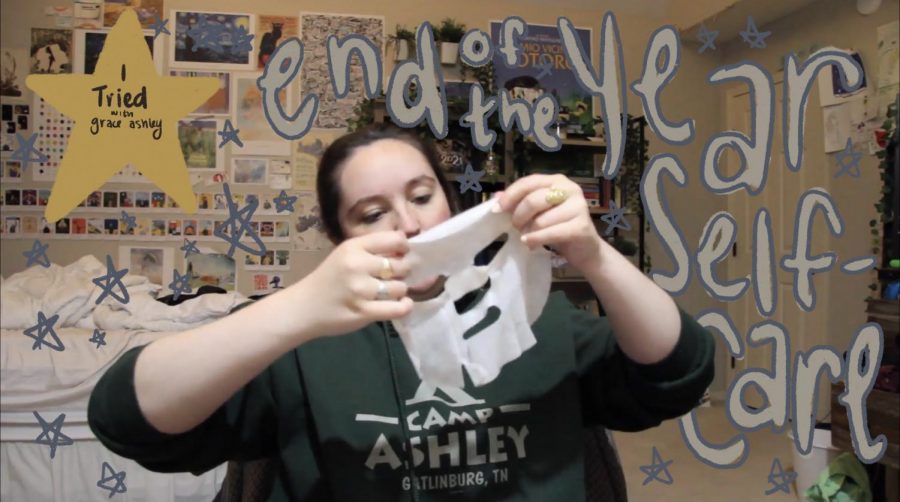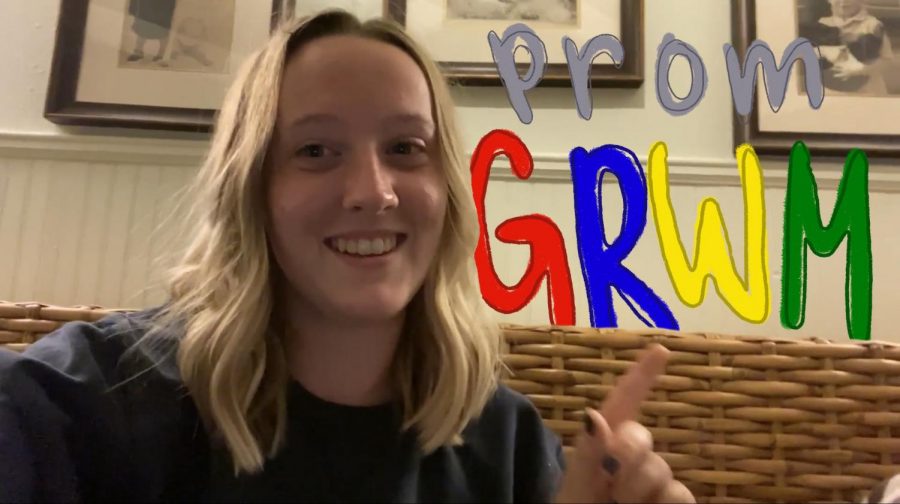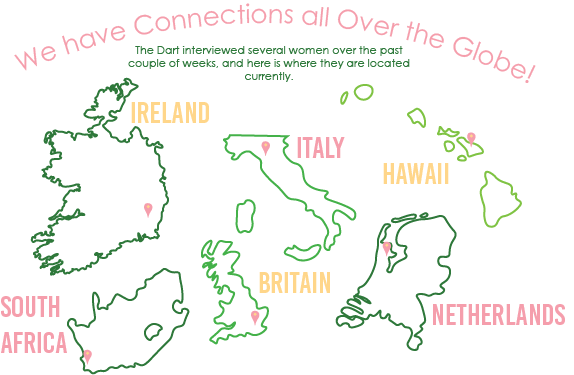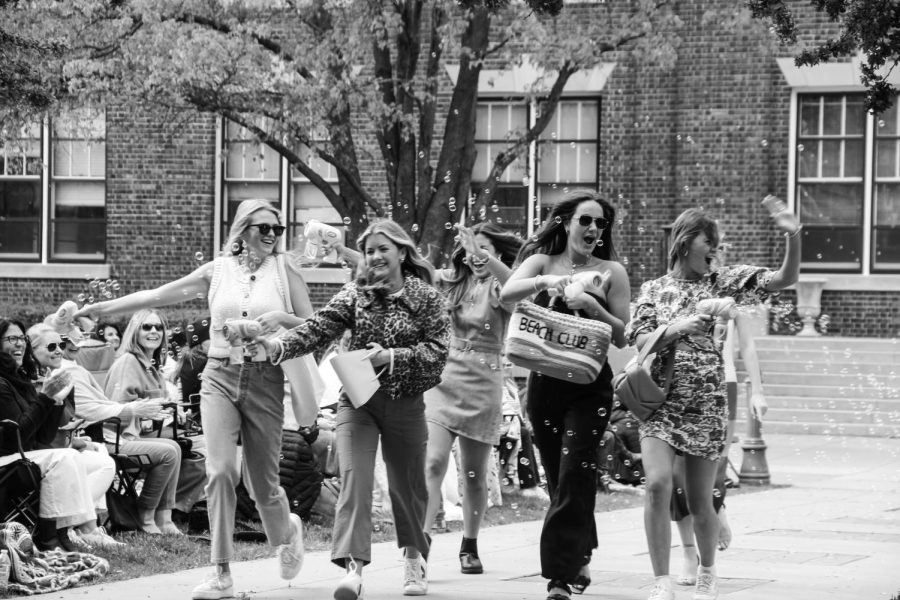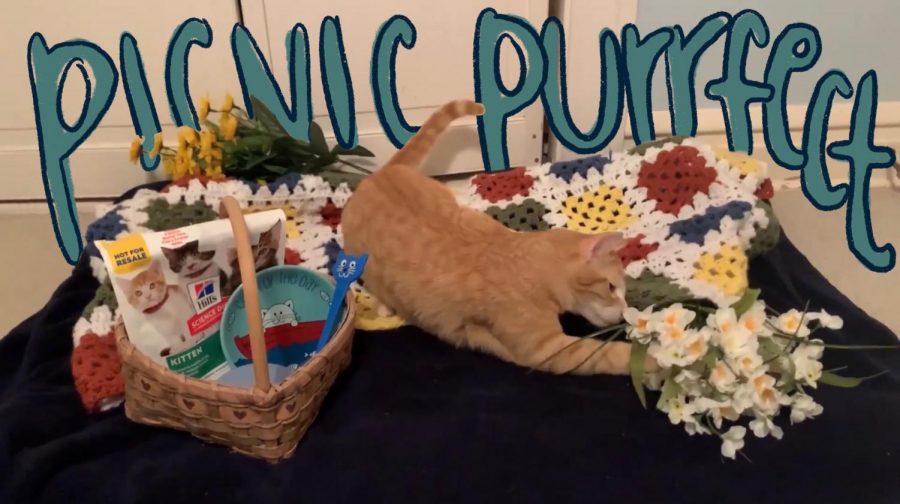Story by Emily Bresette
Video by Emma Wheatley
Photos by Natalie Fitts
Sitting down in a studio in Armourdale, Kan., senior Brianna Casey buckles on her black dance shoes. Wearing yoga pants and a t-shirt and with hair pulled back in a bun, she and 15 other members are ready to practice for an upcoming performance. While talking and laughing, the instructors tell the class to settle down. Soon, the dancers are kicking their legs back and forth and holding their hands by their heads as if they were wearing cowboy hats. They stop and clap their hands, all in unison. Three times a week for around an hour, Casey practices traditional Mexican folkloric dancing with El Grupo Folklorico Atotonilco. Routed deep in her family’s history, she continues this timeless tradition of Mexican dancing. For Casey, dancing is not only a family affair, but something she loves.
[wpvideo 29iTuGeo]
All in the family
For Casey, dancing runs in the family. Many of Casey’s family members enjoy Mexican fokloric dancing. Casey’s aunt Maria Chaurand is the director of El Grupo Folkorico Atotonilco, and her son, Casey’s cousin Andres Chaurand is an instructor and dancer for the group. While all members of the group have Mexican heritage, it is not a requirement to join the group.
According to Casey, all her cousins on her mom’s side dance. Her older sister Mikaela also danced, but stopped when she went away to college.
“I mostly started dancing because of my aunt,” Casey said. “[I started dancing] mostly because it was a family thing and it was important for me to [start dancing].”
Andres originally started dancing when he was three as well because of his mother, Maria.
“I started because my mom is the director,” Andres said. “I was kind of born into dancing. If I hadn’t wanted to do [dancing], I wouldn’t been forced into it. It’s something I enjoy.”
Andres now teaches some classes at his mom’s studio.
“I definitely enjoy [teaching dancing],” Andres said. “I like helping people out and teaching them something new. Just having that feeling of satisfaction, I guess. I enjoy [teaching] personally.”
Maria was 5 when she first performed folkloric dancing. After being born in Mexico City, she came to the United States when she was just three. Folkloric dancing turned into a way to keep her culture alive.
“It’s part of who I am,” Maria said. “My mother and father opened a Mexican restaurant and we lso have a tortilla factory. So we’ve been keeping our culture alive.”
In 1979, because of her love for dancing, Maria founded El Grupo Folkorico Atotonilco, what she considers to be the closest thing Kansas City has to professional folkloric dancing. “It is my passion,” Maria said. “It is something I just love.”
Performing across Mexico
For Casey, performing is something she enjoys. The group performs by Mexican states. Each performance is a single state, although according to Casey, some performances will showcase two states. According to Maria, there are 31 Mexican states, and within each state there are multiple regions as well. The type of music one might dance to depends on where you are in Mexico.
“The music is much different in some places than in others,” Casey said. ”It really just varies by state.”
For example, music from the state of Jalisco is mariachi band music, while one well-known song from Veracruz includes “La Bamba.”
The dancing schedule can change as often as the type of music the group dances to. Certain times of the year are busier than others, in terms of performances, but there are usually at least two performances a month.
“There are times during the year where we have more performances,” Casey said. “ Like [Mexican] Independence Day, we have a bunch. Cinco de Mayo is another one where we have a lot of performances.”
Andres says the group tries to book as many show as they can. Since September, the group has already had over 13 shows. According to Andres, the group as a whole, not individual dancers, will take any kind of payment for performing in order to help pay rent for the studio. However, the group does perform for free as well, because they love performing.
For Casey, there are many reasons why she enjoys performing.
“I like that [performing] is service back to the community,” Casey said. “I like knowing that the people enjoy watching.”
Andres agrees with Casey and likes performing to give back to the community.
“I like that we’re able to go around and perform and watch the crowd get into it,” Andres said. “Just performing for people’s entertainment is a good time. It makes you feel good.”
Maria believes that performing is a way to show others their culture.
“We love performing,” Maria said. “Come see us, learn about us. We’re here to be teachers to you.”
Traveling is another reason Casey likes performing. The group has traveled all around Missouri and Kansas as well as Chicago, Texas and Mexico.
“I would say Mexico is my favorite place [that we’ve traveled to],” Casey said. “It would be really fun to go back.”
Andres also said that one his favorite parts about dancing is getting to travel.
“We like to travel,” Andres said. “That’s one of the best times with the group you can have is spending that much time with the group on the vans or buses. It’s a good time.”
Looking the part
According to Casey, the costumes for each dance may change, but the hair and makeup generally stays the same.
“The costumes are different depending on what state we’re dancing,” Casey said. “If we’re dancing somewhere from the coast or somewhere beachy, then [the costumes are] usually white or not as busy of skirts. But if it’s a city that more [Hispanic] then we usually have the traditional costumes that I think most people expect.”
For example, if the group were dancing Jalisco, they would wear what most people think of as the tradional outfits: the big flowy skirts with vibrant colors. But if the group was performing Veracruz, then they would wear a white slip with a white skirt and flowers in their hair.
For each performance, dancers’ hair is sleeked back into a bun. This is something that never changes.
Andres said that while some costumes are fine to wear, some are not as enjoyable.
“Some of them are okay,” Andres said. “Some are kind of annoying. It just varies. I think some of them are more annoying for the girls then they are for the guys, just because they have to put more accessories on and do more [to get ready].”
Performers’ makeup is what Casey describes as “big makeup,” or stage makeup.
“The makeup is always fun to do for performances,” Casey said. “The hair is kind of a pain, but I’m so used to it now I don’t really mind doing it.”
Maria says that the makeup is always uniform throughout all the performers. If one person is wearing blue eye shadow, the whole group is wearing blue eye shadow. The group must all look the same.
Maria says that even though many times the costumes can be expensive, it is a small price to pay in order to keep the culture alive.
“Gosh I probably have around $10,000 worth of costumes,” Maria said. “They’re expensive. You have to really put in some money. We don’t want to go away from that. We don’t make our own costumes. We bring them in and show the originality of every state that we do, because we respect [our culture] that much.”
Connecting to culture and family
Because his family is so heavily involved with folkloric dancing, Andres believes that this helps him connect to his culture.
“[Dancing] definitely connects me to my culture because it’s part of who I am,” Andres said. “It’s my heritage and where I come from. I think it’s definitely a big part of my culture.
Maria also feels very strongly that dancing lets her connect to her culture. She believes that her culture defines who she is and she is very close to her culture.
Maria believes that no matter where you are in the world, people will embody their culture.
“I think everybody that’s from a different country can attest to that,” Maria said. “You know, Irish, Italian, Chinese, Indian. If they’re taught by their parents and have their culture instilled in them, it’s going to stay with them.”
Even though Maria is American, she does not want to lose this part of herself and her culture.
“ [Embodying your culture] doesn’t have anything to do with being American, because I am very much American,” Maria said. “But at the same time, I want to keep my roots, keep my culture, keep who I am.”
Maria believes that dancing connects her not only to her culture, but to her family as well. She said that within her family, their beliefs, the way they cook, their dancing their music and language keep them all extremely close.
Casey agrees with her aunt and believes that dancing also connects her family.
“Well since it’s a family affair, I feel really connected and just really empowered and inspired,” Casey said. “I just like spreading the culture.”
[nggallery id=152]





